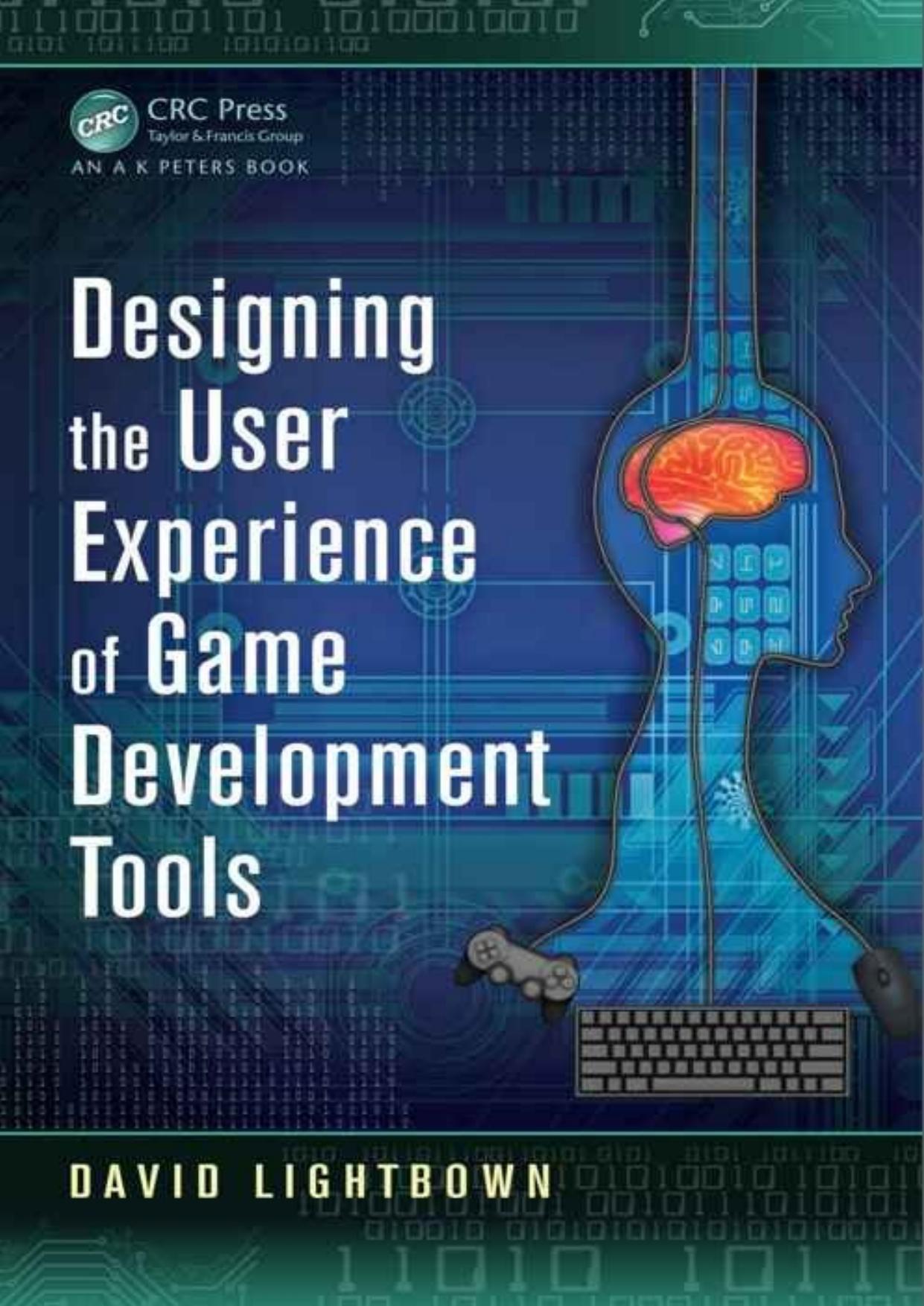Designing the User Experience of Game Development Tools by David Lightbown

Author:David Lightbown
Language: rus
Format: mobi, epub, pdf
Publisher: A K Peters/CRC Press
Published: 2015-02-17T22:00:00+00:00
68 ◾ Designing the User Experience of Game Development Tools Goals
Goals
Nullam quis
Morbi metus sapien
Dapibus augue
Blandit eget
Vitae blandit justo
Ullamcorper tinci
Donec malesuad
Mental Models
Mental Models
Pellentesque quis
Ellentesque ornare
Nibh in dignissim
Patrick
Tincidunt felis
Rochelle
Elit sapien maecena
Level Designer
At ultrices aliquam
Animator
Fasellus imperdiet
FIGURE 4.21 Example personas.
It is also important to give each persona a realistic name and a natural-looking picture. For example, giving a persona the name “Moe the
Modeler” and using a cartoon character as a photo will result in people
not taking the personas seriously.*
Personas created to represent users of a game development tool might
look something like Figure 4.21.
Scenario Storyboards
To create an even deeper understanding of context, you can also choose
to create scenario storyboards. Scenario storyboards resemble the sto-
ryboards we use when planning a game cinematic (see Figure 4.22). The
FIGURE 4.22 Example scenario storyboard.
* You can auto- generate realistic names and pictures from websites like http://www.randomuser.
me, or you can use a more complete persona creation solution with tools such as http://www.
usabilitytools.com/ features- benefits/ persona- creator.
Analysis ◾ 69
purpose of a scenario is to explore how the tool is used in a variety of contexts. They are very useful for ensuring that everyone involved in the development of the tool understands and agrees on how the tool is supposed to be used.
How to Create Scenario Storyboards
To create a scenario storyboard, first choose one or more user goals or
tasks. If you have also created personas, you can choose to feature them in the scenario storyboard. Each frame in the storyboard depicts an action
performed by the personas while they are using the tool, and it ends in the successful completion of their task or goals.*
Scenario storyboards do not include references to the user interface.
Instead, they show how the personas would interact with the user objects.
This keeps the scenario storyboards at a high level so that they do not
influence us into assuming that the interface must function or look a certain way. This enables us to focus on finding the best possible design solution to achieve the users’ goals.
The quality of the drawings is not important. However, if you need some
assistance producing storyboards, many web- based tools are available.†
WRAPPING UP
In this chapter, we learned about the Analysis phase of the User- Centered Design process. We discussed the value of watching users work, the limitations of metrics and focus groups, and the importance of thinking in
terms of the problems that we are trying to solve (not the features we want to implement). We also learned about human– computer interaction, the
action cycle, its effects on efficiency and learnability, as well as the concept of the user’s mental model. Finally, we learned a variety of techniques to be used during the Analysis phase, such as interviewing stakeholders, performing contextual analyses, creating task flows, and establish-
ing measurements.
In the next chapter, we will discuss concepts and techniques to be used
during the Design phase of the User- Centered Design process.
* For more on creating scenarios, you can also read Chapter 6 of Cooper, Reinmann, and Cronin’s book About Face 3.
† Storyboard That (http:/ www.storyboardthat.com/) and Amazon Storyteller (http:/ studios.amazon.
com/ storyteller) are two popular examples.
Download
Designing the User Experience of Game Development Tools by David Lightbown.epub
Designing the User Experience of Game Development Tools by David Lightbown.pdf
This site does not store any files on its server. We only index and link to content provided by other sites. Please contact the content providers to delete copyright contents if any and email us, we'll remove relevant links or contents immediately.
Blood, Sweat, and Pixels by Jason Schreier(3566)
Godot 4 Game Development Cookbook by Jeff Johnson(2862)
Dawn of the New Everything by Jaron Lanier(2738)
The Art of Doom by Bethesda(2108)
Significant Zero by Walt Williams(1929)
Creative Character Design by Bryan Tillman(1889)
Art Of Atari by Tim Lapetino(1750)
World of Warcraft Chronicle Volume 3 by Blizzard Entertainment(1707)
The Ultimate Roblox Book by David Jagneaux(1657)
Mission Python by Sean McManus(1655)
Pillars of Eternity Guidebook by Obsidian Entertainment(1626)
Dawn of the New Everything: Encounters with Reality and Virtual Reality by Jaron Lanier(1578)
Unreal Engine 4 Virtual Reality Projects by Kevin Mack(1527)
1628927445Game by Unknown(1524)
Unreal Engine Virtual Reality Quick Start Guide by Jessica Plowman(1513)
Learning D by 2015(1490)
The Ultimate Player's Guide to Minecraft by Stephen O'Brien(1489)
Unity 2018 By Example by Alan Thorn(1430)
Road Games by Road Games(1416)
